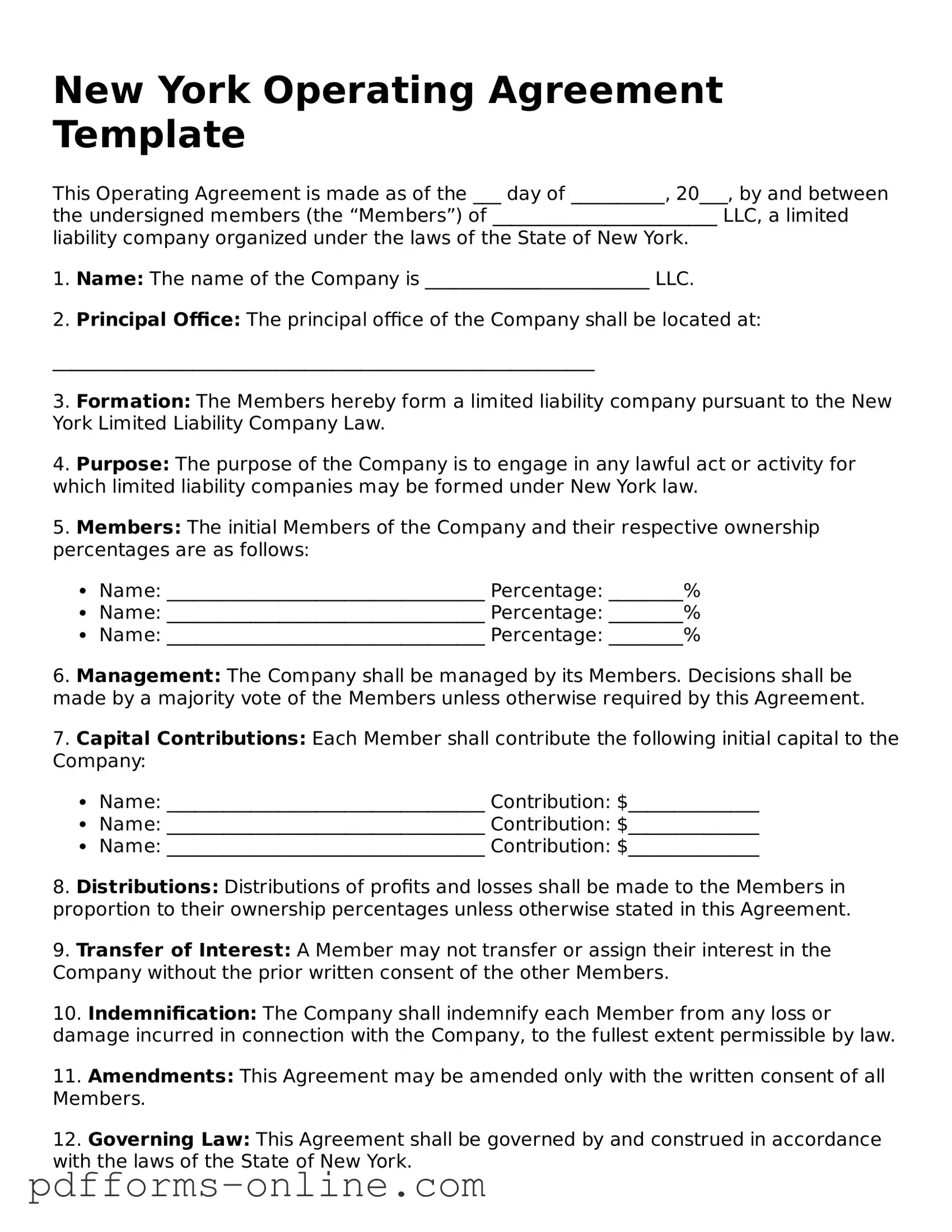New York Operating Agreement Template
This Operating Agreement is made as of the ___ day of __________, 20___, by and between the undersigned members (the “Members”) of ________________________ LLC, a limited liability company organized under the laws of the State of New York.
1. Name: The name of the Company is ________________________ LLC.
2. Principal Office: The principal office of the Company shall be located at:
__________________________________________________________
3. Formation: The Members hereby form a limited liability company pursuant to the New York Limited Liability Company Law.
4. Purpose: The purpose of the Company is to engage in any lawful act or activity for which limited liability companies may be formed under New York law.
5. Members: The initial Members of the Company and their respective ownership percentages are as follows:
- Name: __________________________________ Percentage: ________%
- Name: __________________________________ Percentage: ________%
- Name: __________________________________ Percentage: ________%
6. Management: The Company shall be managed by its Members. Decisions shall be made by a majority vote of the Members unless otherwise required by this Agreement.
7. Capital Contributions: Each Member shall contribute the following initial capital to the Company:
- Name: __________________________________ Contribution: $______________
- Name: __________________________________ Contribution: $______________
- Name: __________________________________ Contribution: $______________
8. Distributions: Distributions of profits and losses shall be made to the Members in proportion to their ownership percentages unless otherwise stated in this Agreement.
9. Transfer of Interest: A Member may not transfer or assign their interest in the Company without the prior written consent of the other Members.
10. Indemnification: The Company shall indemnify each Member from any loss or damage incurred in connection with the Company, to the fullest extent permissible by law.
11. Amendments: This Agreement may be amended only with the written consent of all Members.
12. Governing Law: This Agreement shall be governed by and construed in accordance with the laws of the State of New York.
IN WITNESS WHEREOF, the Members have executed this Operating Agreement as of the date first above written.
Member Signatures:
- _____________________________ Date: ________________
- _____________________________ Date: ________________
- _____________________________ Date: ________________
